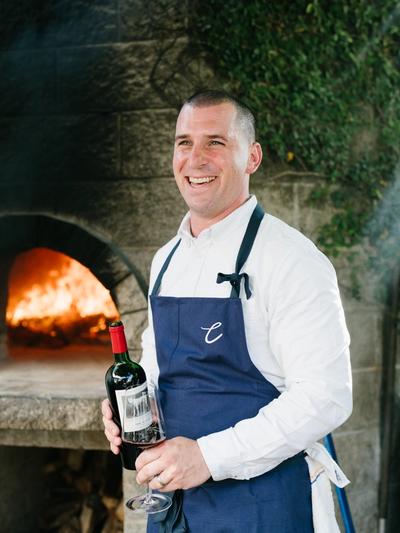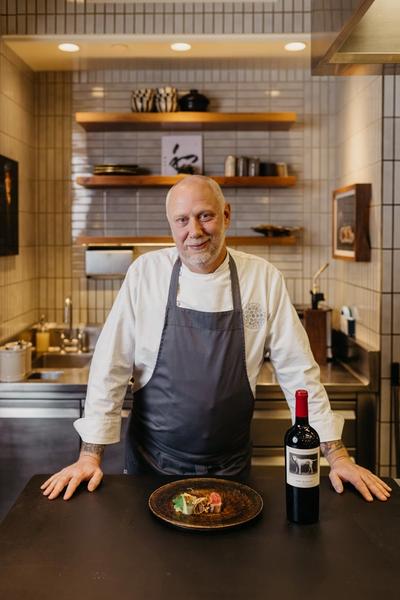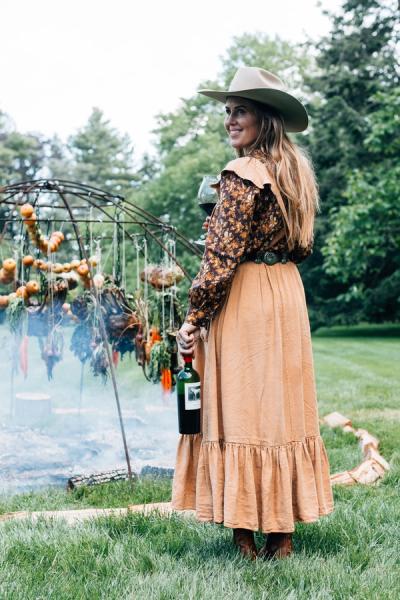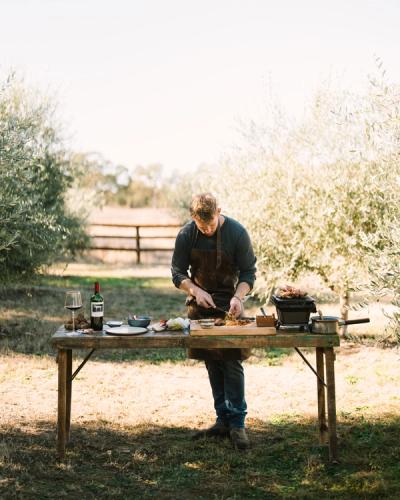Lazy Fancy with Olivia Muniak
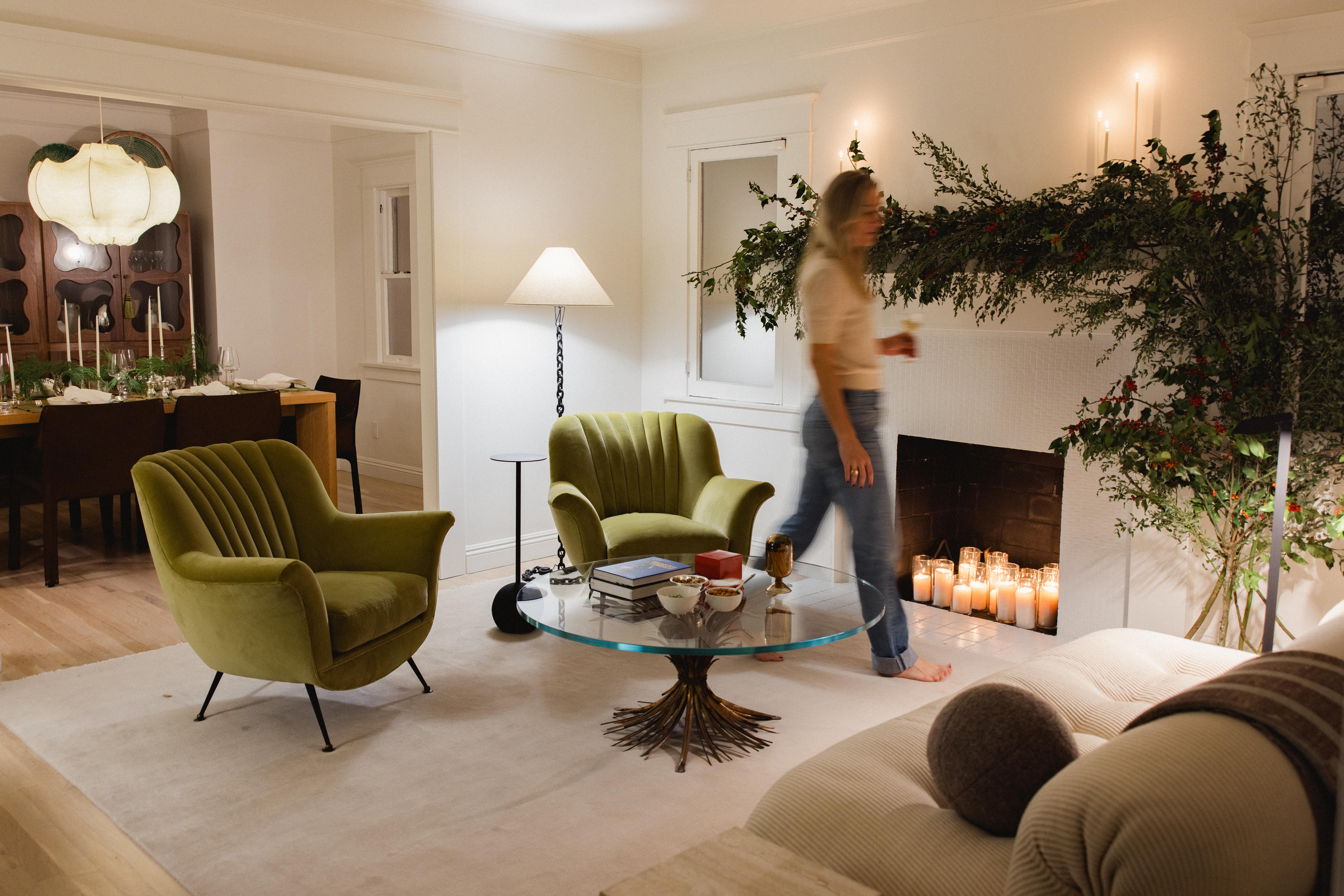
Hosting doesn’t have to be overwhelming to feel special. Olivia Muniak shares her personal "lazy fancy" philosophy, a relaxed yet elegant approach to entertaining that makes every gathering memorable.
What’s one unexpected detail that can make a big impact at a dinner party?
Olivia: One of the most important and often overlooked elements is lighting, it sets the tone of the evening. Most homes and apartments are designed with intense overhead lighting and chandeliers with sustainable LED light bulbs, which can be harsh for a dinner. Install dimmers in all dining and kitchen areas. If you don’t have time for that inexpensive switch, style the room with floor or table lamps, and keep the overheads off – it’s a thoughtful design choice and makes a huge design impact. Then, use as much candlelight as possible. A mix of taper candles and votives on the table, and clusters of pillar candles throughout the room. I recommend unscented candles in most areas, except for the powder room and living room (if you must).
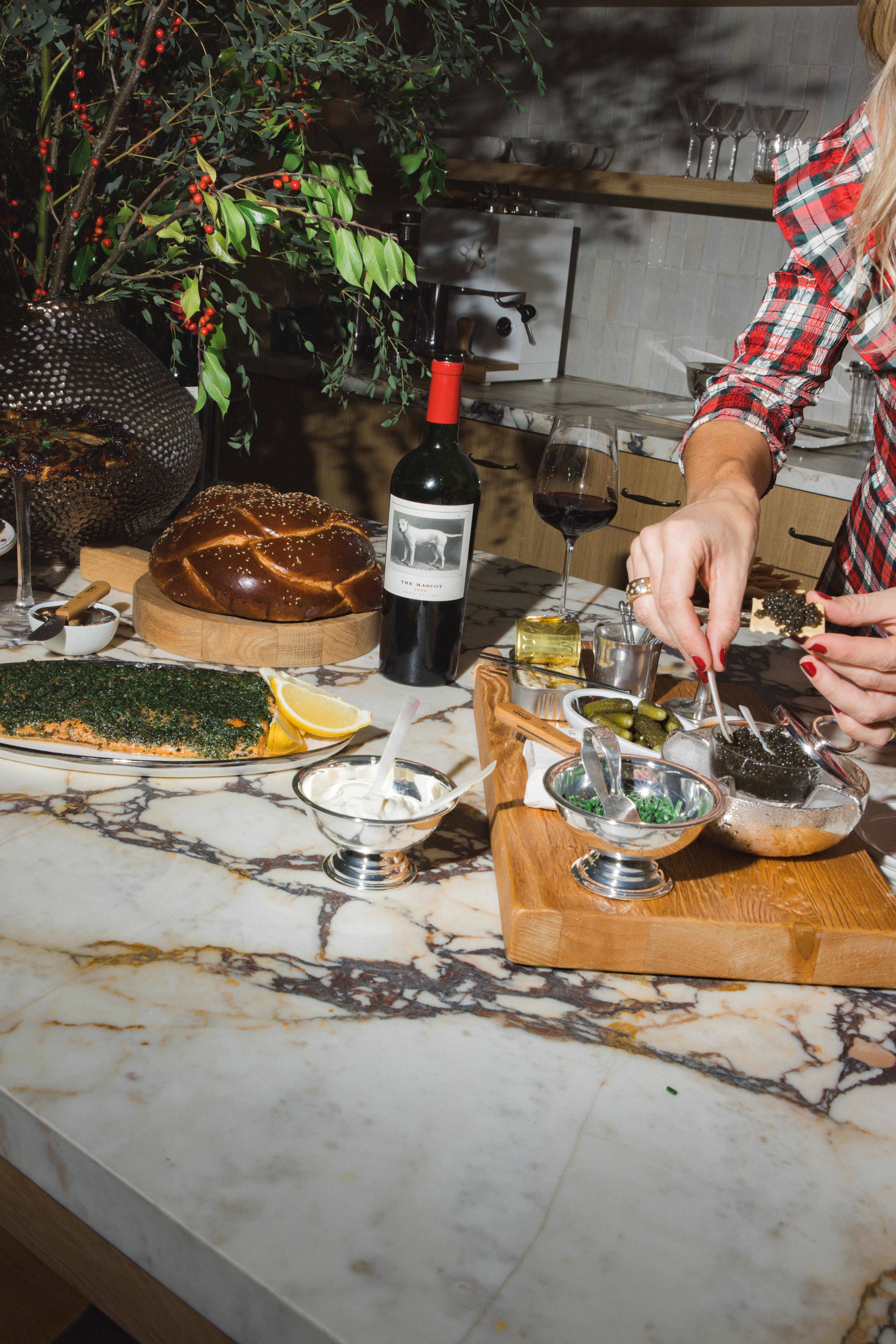
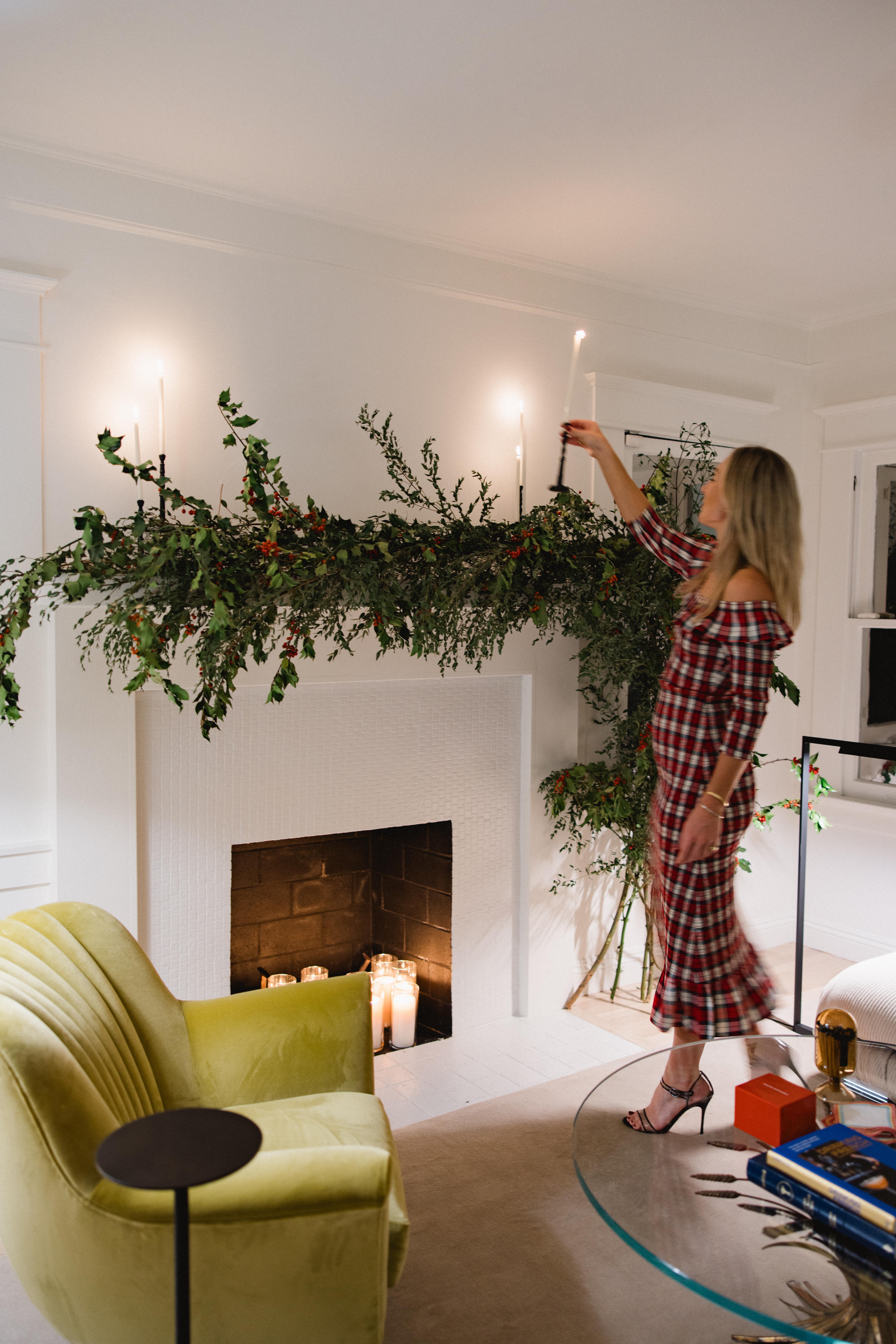
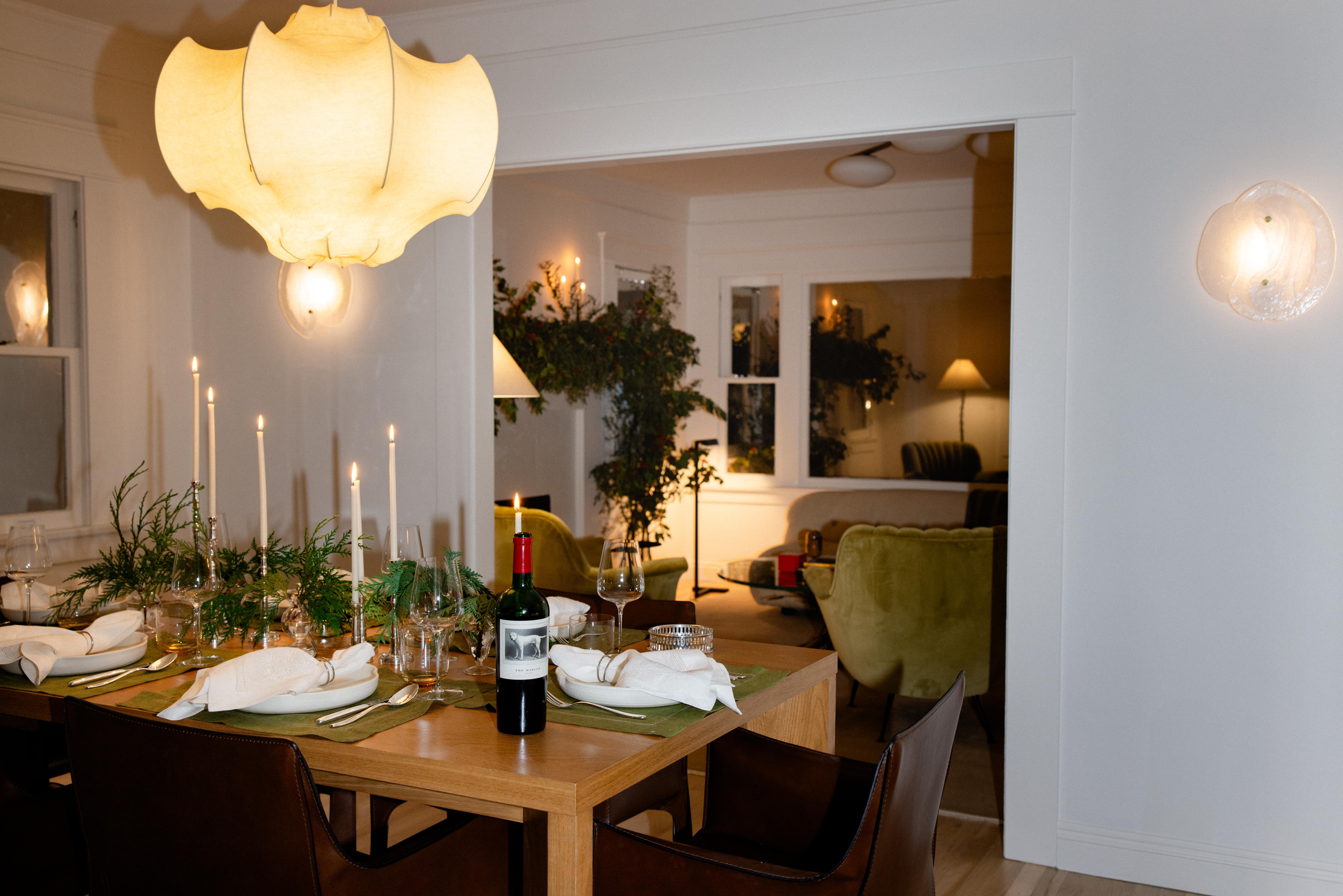
How do you approach pairing food and wine for different seasons or occasions?
Olivia: I think the most natural and simple way to cook is with the seasons. I look forward to each turn of the season with so much glee just to eat and drink my favorite things. From spring to summer, fall, and into winter our food goes from young and fresh, to bright and juicy, and finally to richer flavor profiles. So when it comes to the wines that compliment the food I apply the same philosophy of brighter, lighter wines and moving into richer ones as we turn indoors for the colder months.
"Lazy fancy” is about making hosting easy but also special: creating a relaxed yet elegant atmosphere, make-ahead and minimal ingredient recipes, and simple and impactful design and decor choices."
Olivia Muniak
Los Angeles, CA
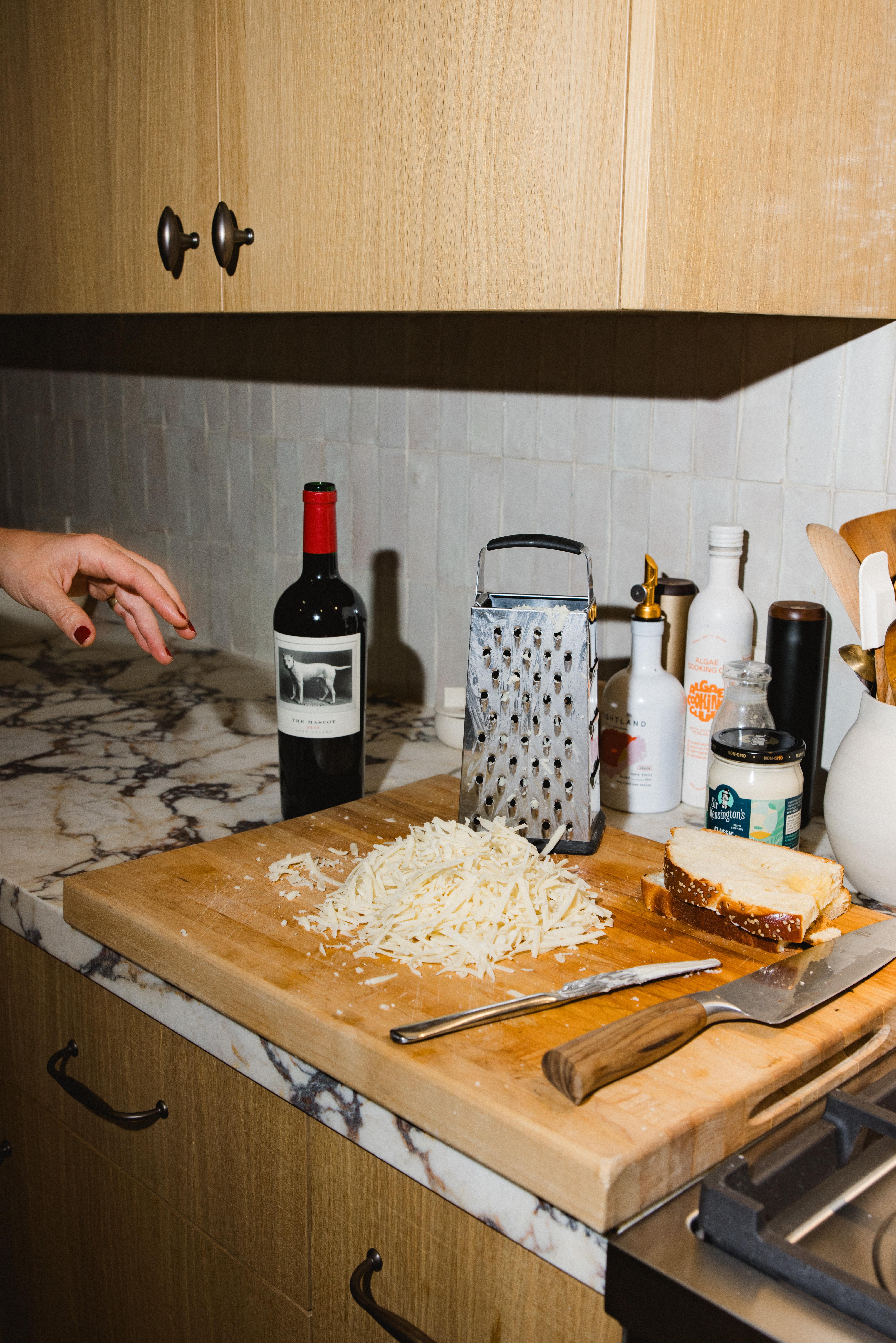
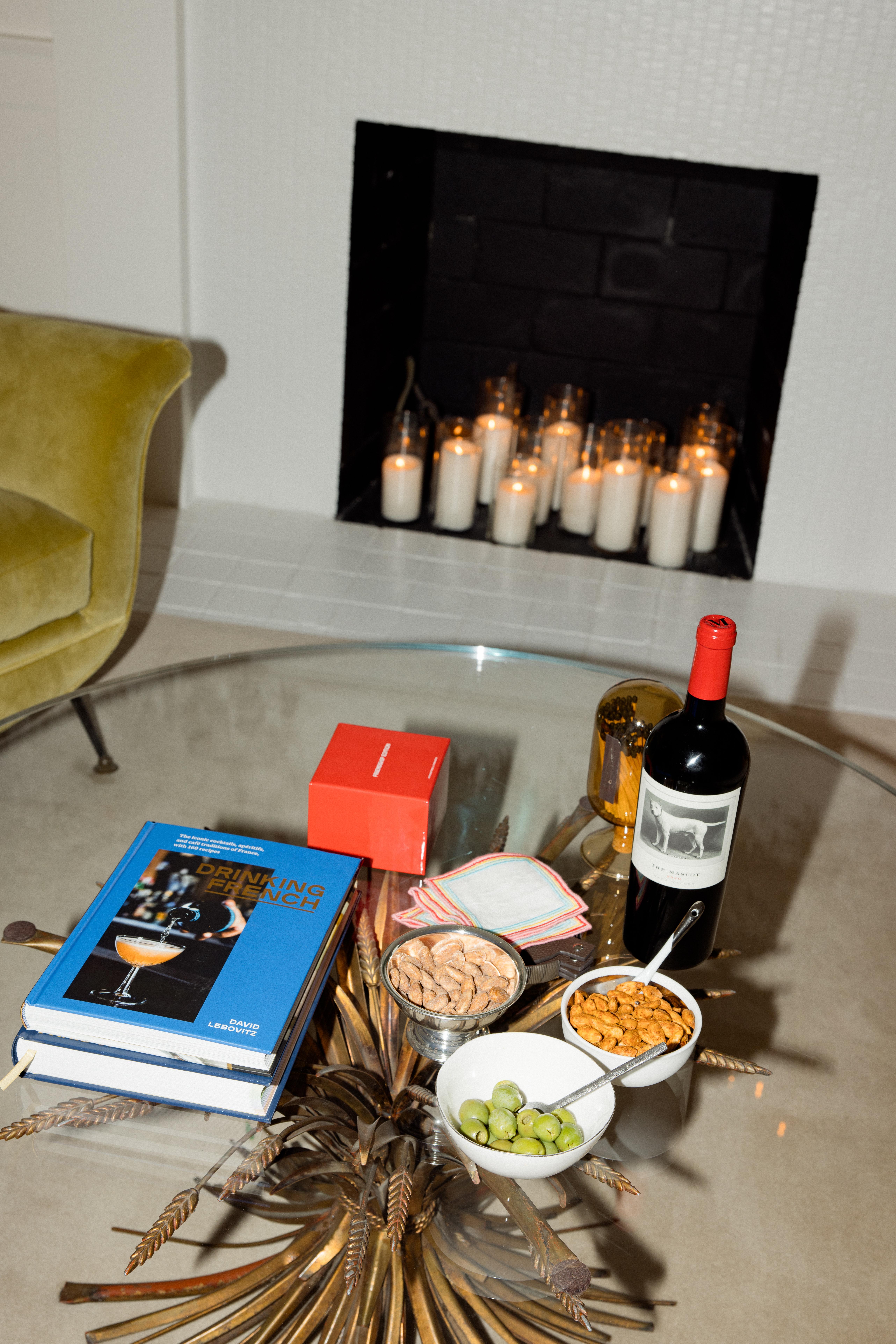
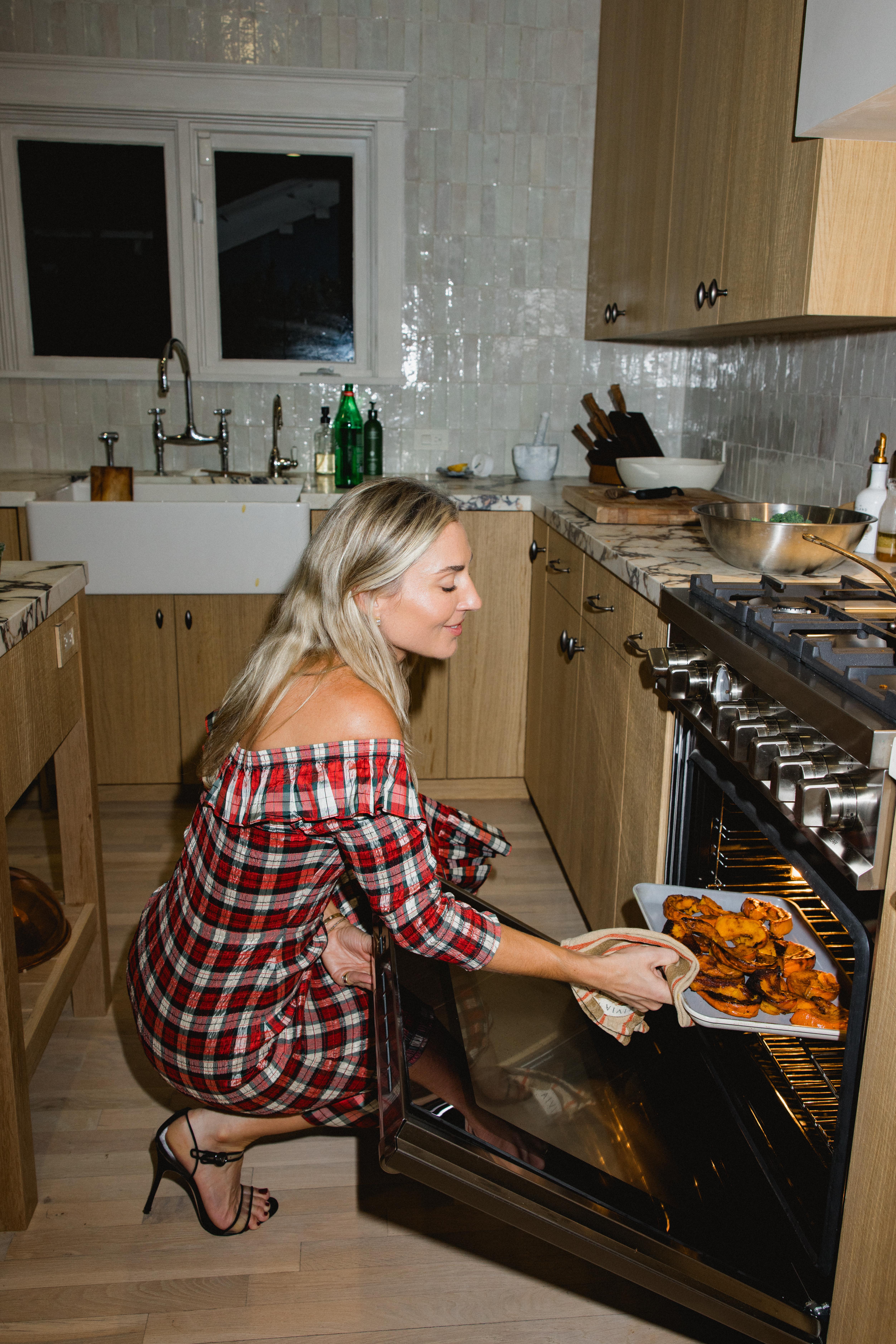
What advice would you give to someone hosting their first dinner party with wine pairings?
Olivia: In wine pairing, we are either looking for the wine to match the flavor profile and structure of the food to enhance both the dish and the wine, or be the opposite to balance the characteristics of the dish. But as in everything with food and drink – our palettes and preferences are how we should calibrate a meal with pairing. The beauty of wine is that it is subjective, and while there are benchmarks that I adhere to, I like to serve what I enjoy. The best place to learn how to pair, outside of taking an introductory class (which I recommend), is going to a great, local wine shop to ask questions. Plan to have the food menu in mind when you go; wine people love to help you find the best wine for your meal!
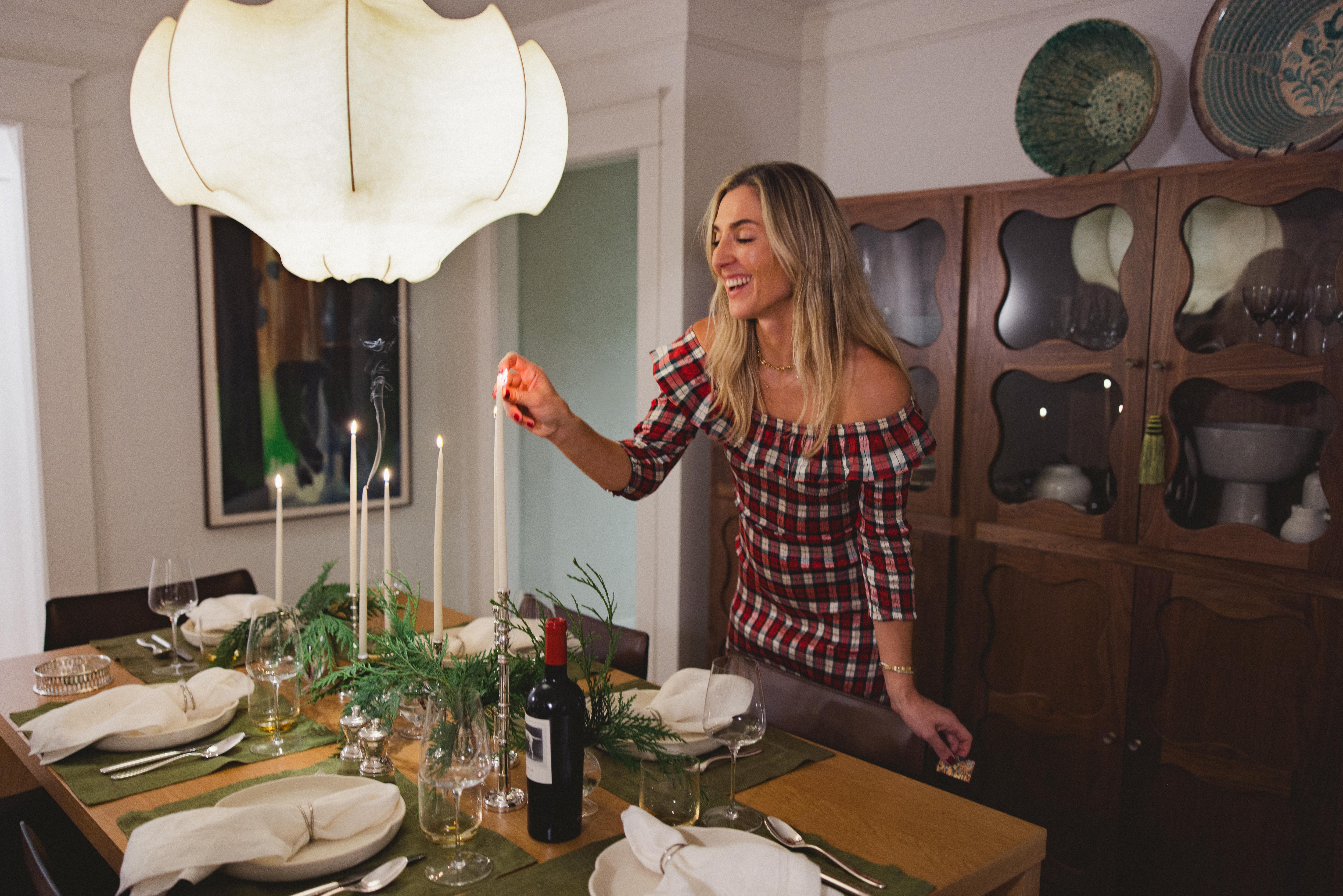
Olivia prepares an intimate holiday dinner party for friends.
"My winter go-to comfort food wine pairing for a lazy day is Bolognese. I like to swap out the traditional pork or beef for lamb and serve it with dollops of goat cheese and finely chopped mint."
How does the menu design influence your approach to event design?
Olivia: I never know where my inspiration will come from; sometimes it's a dish that sparks the idea for the decor, or vice versa. When I am approached for a client's project where we oversee both the event design and catering, there is often a theme we are tasked with, and I start there.
For years, the food or “catering” was necessary but not a statement. Now, the food is as artful as the decor, and making the two cohesive creates a memorable event. One example was a holiday party for Goop where we created 18” butter sculptures with a chive “G” logo and towers of gougeres. The entire display was edible, as was the decor. Another example was a wedding I catered for a couple where the husband was all about food and wine, and the wife had a self-proclaimed palate of a teenager.
We came up with a menu that they both loved. Still, when I saw the wedding planner's table design, I quickly called the couple to change one of the dishes from Pasta Pomodoro to Cacio e Pepe because the bold pomodoro sauce clashed with the table decor and would undoubtedly splatter all over the white and sage table linens. Ultimately, I knew the food would stand out in photos of the family-style dinner instead of the decor and guests.
Can you share a tip for incorporating personal touches into a dinner party?
Olivia: One way to make a party unique is to play with “high-low”; it creates so much runway for decor and atmosphere i.e. cocktail party or sit-down dinner, formal or informal dress code, you can get really creative and personal. For example, I like to host a Caviar Baked Potato dinner in the winter; it’s unexpected and fun. A friend of mine hosts a fried chicken and pink champagne party every summer – the pairing is fantastic and unique to her.
Another way I like to personalize a dinner without a theme is to use personal or handmade items on the table. I’ve been collecting vintage silver and small ceramics on trips for years, and styling them with or in and around the food, telling a story at the table. Don’t save them for that “special day”- use them! You could also buy a set of watercolor paintbrushes and colored ink to make place cards. There are endless quirky designs for inspiration on Pinterest.
Need a Lazy Fancy recipe for your next dinner party? This Cedar Plank Salmon is Olivia's Go-To.
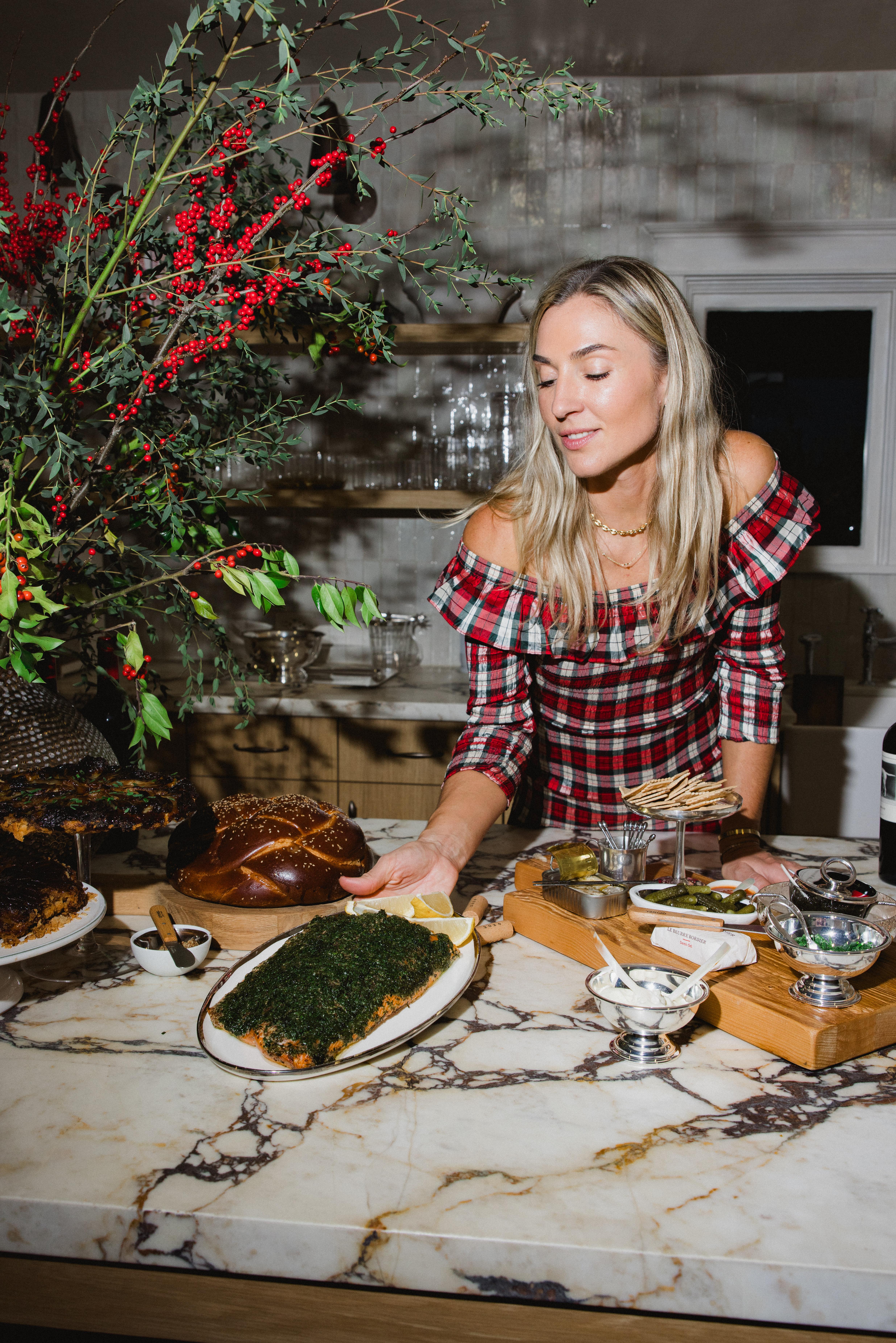
Olivia serving her favorite cedar-plank salmon.
Cedar-Planked Herb-Crusted Salmon
Serves 6-8
Ingredients
2.5–3 lbs King salmon (ask for one whole piece, not filets)
1 bunch flat-leaf parsley
½ bunch dill
3–4 stems tarragon
2 tbsp grainy Dijon mustard
2–3 tbsp olive oil
Kosher salt
Freshly ground pepper
Lemon wedges (for serving)
Method
Prep the Cedar Planks Soak cedar planks in water for at least 1 hour, ensuring they are fully submerged to prevent burning during grilling. Prepare the Grill Preheat the grill to 400°F. Season the Salmon. Remove the salmon from the fridge and spread Dijon mustard generously over the surface—season with kosher salt and freshly ground pepper.
Make the Herb Paste. Finely chop parsley, dill, and tarragon (or use a mini food processor). Mix the herbs with olive oil in a small bowl to create a paste. Coat the salmon evenly with the herb paste. This step can be done up to 24 hours ahead; refrigerate until ready to cook. Rest the Salmon. Remove the salmon from the fridge 30 minutes before grilling to allow it to come to room temperature. Grill the Salmon. Place the salmon on the soaked cedar planks and grill until cooked to your desired doneness.
Serve hot, at room temperature, or chilled, with lemon wedges on the side.
